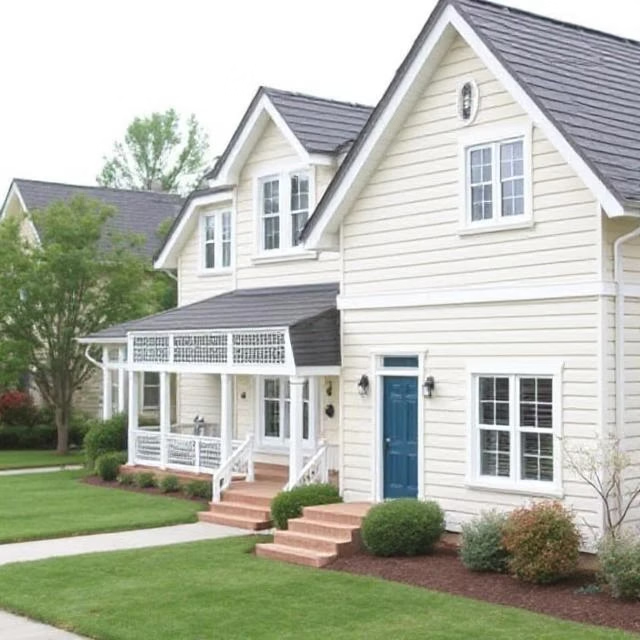Have you ever wondered why so many people seem confused when choosing a mortgage type? With a variety of options available and each with its own set of advantages and potential pitfalls, selecting the best mortgage for your needs can seem daunting. Mortgages are foundational to homeownership, yet understanding the different types can be complex. This article aims to provide clarity and insight into the diverse world of mortgage types, emphasizing key distinctions to help you make informed decisions.
Fixed-Rate Mortgages
A fixed-rate mortgage is often seen as a staple in the mortgage market, largely due to its straightforwardness and predictability. With a fixed-rate mortgage, you agree to pay a set interest rate for the duration of your loan term, whether it’s 15, 20, or 30 years. This stability offers peace of mind, as your monthly payments remain unchanged, making it easier to plan your finances long term. Fixed-rate mortgages are particularly favorable in a low-interest environment, where securing a low rate can result in significant savings over time. Borrowers often choose this option if they plan to stay in their home for a long period, as it protects them from potential interest rate hikes in the future.
Understanding Different Mortgage Features

The varied landscape of mortgages can best be understood by looking at the unique features each type offers. Below is a table that highlights some of these distinguishing factors:
| Mortgage Type | Interest Rate Change | Key Benefits |
|---|---|---|
| Fixed-Rate Mortgage | No Change | Predictable payments |
| Adjustable-Rate Mortgage (ARM) | Varies | Potentially lower initial rates |
| Interest-Only Mortgage | Varies | Lower initial payments |
| FHA Loan | No Change | Lower down payments |
| VA Loan | No Change | No down payment for eligible veterans |
This table provides a snapshot, but the intricacies of each mortgage can speak volumes about their suitability for different individuals.
Adjustable-Rate Mortgages (ARMs)
Adjustable-rate mortgages, or ARMs, offer an initial period where the interest rate is fixed, usually lower than that of a standard fixed-rate mortgage, followed by a variable rate that can change at predetermined intervals. Typically, the adjustment period occurs annually but could vary depending on the loan terms. For example, a 5/1 ARM has a fixed rate for the first five years, after which the rate adjusts every year. This type of mortgage is appealing for those who might plan on moving or refinancing before the rate adjusts, as it initially provides more affordable payments. However, the uncertainty of future interest rates could lead to significantly higher payments once the fixed period ends.
Interest-Only Mortgages
“Interest-only mortgages offer a unique payment structure that can be beneficial or risky, depending on the borrower’s circumstances.”
“Interest-only periods allow borrowers to lower their payments in the early stages but necessitate larger payments when entering the principal repayment phase.”
Interest-only mortgages permit the borrower to pay solely the interest for a specified period, usually between 5 to 10 years. This means lower initial monthly payments, providing financial breathing room. Nonetheless, when the interest-only term concludes, borrowers must start making payments on both the principal and interest, often resulting in a significant increase in monthly payments. These are ideal for borrowers anticipating a higher income in the future or for those seeking short-term investment properties but can be risky if property values decrease or expected income increases do not occur.
FHA Loans
FHA loans are insured by the Federal Housing Administration and are coveted for their low down payment requirements and relaxed credit score standards. Typically, borrowers can make down payments as low as 3.5% of the purchase price, making them accessible to first-time homebuyers or those with limited funds. The FHA’s backing reduces lender risk, enabling them to offer loans to borrowers who otherwise might not qualify. Despite these benefits, FHA loans require mortgage insurance premiums, both upfront and annually, which can increase the overall cost. This government-backed approach has opened the doors of homeownership for many but involves careful consideration of the insurance costs relative to conventional loans.
VA Loans
VA loans stand out due to their exclusive availability to military service members, veterans, and eligible spouses. Backed by the U.S. Department of Veterans Affairs, these loans allow qualifying borrowers to purchase homes with no down payment, favorable terms, and no private mortgage insurance (PMI) requirements. The absence of PMI and flexible underwriting standards make VA loans particularly enticing. Furthermore, interest rates are typically lower than conventional loans. Eligibility and the presence of a funding fee—though it can be rolled into the loan—are essential factors to consider. VA loans are a valuable benefit for those who’ve served, providing an accessible pathway to sustainable homeownership.
Balloon Mortgages
Balloon mortgages are special, short-term mortgage products often designed for commercial real estate but also available for residential buyers. With a balloon mortgage, borrowers pay a fixed low rate for a few years, making minimal or no payments on the principal during this term. At the end of the period, usually five to seven years, the remaining balance is due in a lump sum, known as a “balloon payment.” These mortgages may attract buyers who expect to have increased cash flows before the due date or those planning to refinance. However, they carry the risk of payment shock if refinancing or selling before the balloon payment becomes impractical.
Jumbo Loans
Jumbo loans cater to homebuyers needing more financing than government-backed conforming limits allow. These limits vary by location but typically hover above $548,250 in most U.S. areas. Due to the higher loan amounts and associated lender risks, qualifying for a jumbo loan generally demands a higher credit score, a larger down payment, and robust financial history. Interest rates on jumbo loans can be slightly higher, reflecting the increased risk. However, for those in high-cost property areas or purchasing luxury homes, jumbo loans are often a necessity, providing the means to acquire homes that exceed conventional loan limits.
Reverse Mortgages
Typically available to homeowners aged 62 or older, reverse mortgages offer a unique way to access home equity. Unlike traditional loans, payments from the lender are made to the borrower either as a lump sum, monthly payment, or line of credit. This loan doesn’t require repayment until the borrower sells the home, moves out, or passes away. While reverse mortgages can provide seniors with necessary income, particularly during retirement, they can also be complex and costly, potentially eroding the value of the estate left to heirs. Participants should understand the long-term financial implications and seek counseling to facilitate informed decisions.
FAQ – Common Doubts
What distinguishes a fixed-rate mortgage from an ARM?
A fixed-rate mortgage maintains a constant interest rate and monthly payments, whereas an adjustable-rate mortgage (ARM) starts with a fixed rate before adjusting based on market conditions.
Who qualifies for VA loans?
VA loans are available to veterans, active-duty service members, and some reserve members, as well as their eligible spouses.
What does a balloon payment entail?
A balloon payment refers to a large final payment due at the end of a balloon mortgage term, requiring either refinancing or a sizable outlay of funds.
Are interest-only mortgages a good idea?
Interest-only mortgages can be beneficial for those expecting high future income or short-term ownership but pose risks if property value declines or future income fails to grow.
Why might someone choose a reverse mortgage?
Seniors seeking liquidity during retirement might consider reverse mortgages to access home equity without monthly repayments, although long-term costs should be assessed.
Conclusion
Navigating the world of mortgages can seem like an intricate puzzle, yet understanding the fundamental differences between each type empowers potential homeowners to make choices aligned with their financial circumstances and long-term goals. From the predictability of fixed-rate mortgages to the adaptability of ARMs, each mortgage product caters to a specific set of needs and financial strategies. While some options offer stability and others flexibility or cost-saving potentials, choosing the right mortgage requires careful consideration of your current situation and future plans. By demystifying these mortgage types, this article aims to ease the decision-making process amidst an ever-evolving housing market landscape.





